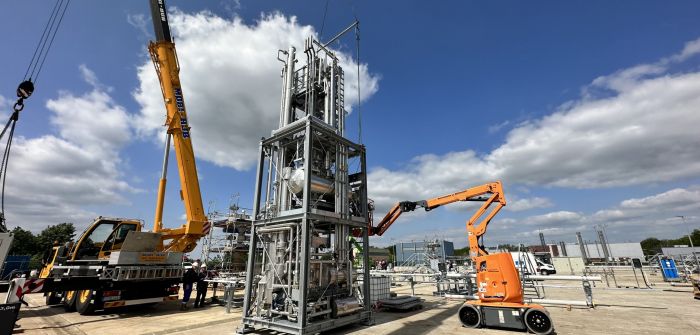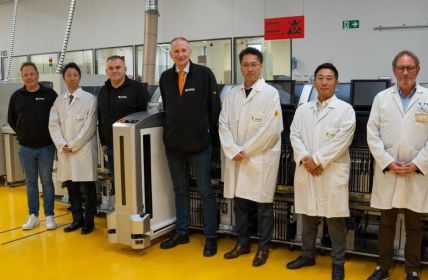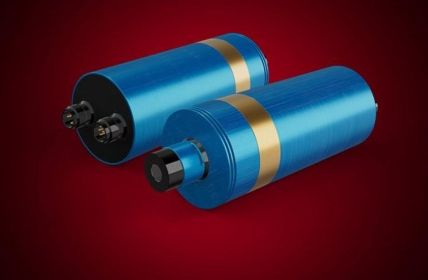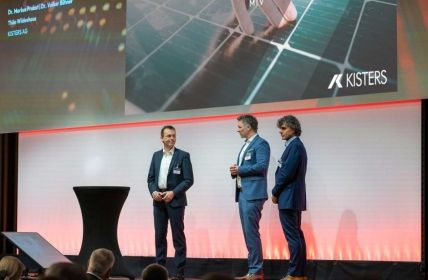The storage of hydrogen as a flexibility option for renewable energies is becoming increasingly important. In order to develop pioneering solutions in this field, various research institutions and energy companies have joined forces. One remarkable project that has just been launched is the construction and operation of Bilfinger’s H2dry plant at the energy service provider EWE’s gas storage site in Rüdersdorf near Berlin. The clever use of the already existing natural gas infrastructure opens up promising possibilities for the efficient storage of hydrogen in underground caverns.
Green hydrogen: availability to match demand
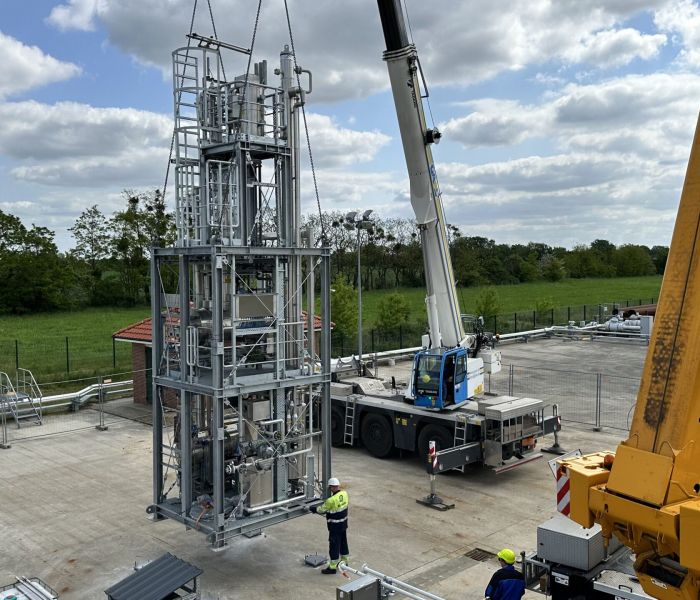
With precise logistics and technical expertise, the H2dry plant was successfully transported from Cloppenburg to Rüdersdorf. The plant, which was mounted on an articulated lorry, is a groundbreaking product that improves the efficiency and safety of hydrogen storage and thus makes an important contribution to the energy transition. (Foto: EWE. Nadine Auras)
The storage of hydrogen in caverns, similar to what is done with natural gas, can represent a significant advance for a future energy system based on renewable energies. By converting green electricity into hydrogen by means of electrolysis, the energy is stored efficiently and can be accessed flexibly when needed. Currently, the EWE company is conducting the “HyCAVmobil” research project in Rüdersdorf, Brandenburg, which is funded by the German Federal Ministry of Digital Affairs and Transport as part of the National Hydrogen and Fuel Cell Technology Innovation Programme. The hydrogen test cavern, which was completed a few weeks ago, has a volume of about 500 cubic metres. The construction of the cavern was preceded by extensive leak tests of the supply line down to a depth of 1,000 metres.
EWE is pushing ahead with the initial filling with hydrogen, using the latest above-ground technology. The company is currently building facilities to store the hydrogen above ground. A significant component of this advanced technology is the H2dry plant for hydrogen drying developed by Bilfinger. This plant enables the hydrogen to be processed economically and efficiently on a large scale after it has been stored in caverns in deep rock strata.
Hydrogen research in Rüdersdorf: Research cavern reveals valuable findings”
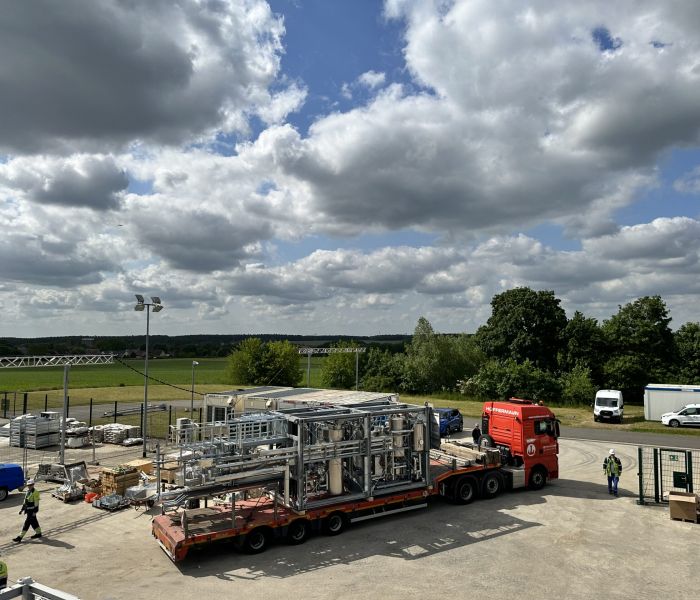
An impressive sight: An articulated lorry is brought to the site on EWE’s cavern site in Rüdersdorf with the help of a crane. (Foto: EWE. Nadine Auras)
The first filling of the research cavern with hydrogen is planned for late summer. In the months that follow, Bilfinger and EWE will gain important results by alternately injecting hydrogen into the cavern and withdrawing it again. These findings can be transferred to caverns with a volume equivalent to 1,000 times the research cavern. EWE alone owns 37 salt caverns, which corresponds to 15 per cent of all German cavern storage facilities. These caverns have the potential for hydrogen storage in the long term.
Breakthrough achieved in hydrogen drying technology
Bilfinger has developed the H2dry plant, which is specifically designed for drying hydrogen. As one of the partners in the EWE research project HyCAVmobil, Bilfinger is working closely with the renowned Institute of Thermodynamics at Leibniz Universität Hannover. In this novel process, the hydrogen is dried by absorbing moisture with the help of a special washing liquid. Bilfinger can draw on its many years of experience and expertise in the gas storage of natural gas, which has proven its high reliability and efficiency for decades.
Bilfinger Engineering & Maintenance GmbH has a wealth of experience in the development of gas drying plants, which have been used successfully throughout Europe. With this in-depth knowledge, we are now in a position to play an active role in shaping the energy transition by using green hydrogen as one of the main pillars of sustainable energy supply. Karsten Hoffhaus, COO of the company, emphasises the importance of this innovative solution for a climate-friendly future.
In perspective, large cavern storage facilities could be an effective solution for storing hydrogen. This enables the storage of large quantities of green hydrogen produced from renewable energies and its flexible use depending on demand. Peter Schmidt, Managing Director of EWE GASSPEICHER GmbH, emphasises the necessity of this approach in order to achieve the targeted climate goals and to diversify and secure the future energy supply.


